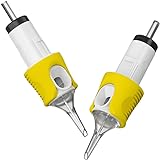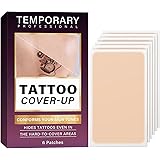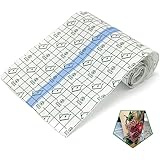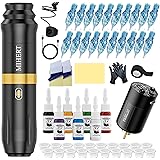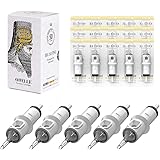One of the most rewarding aspects of personalizing a bullet journal is mastering the art of hand lettering. However, many enthusiasts frequently encounter challenges when attempting to discover accessible and visually appealing lettering styles that can be integrated seamlessly into their daily planning. Fortunately, the accompanying video above, brought to you by CreateWithCait, provides an excellent foundation by showcasing 30 diverse and beginner-friendly lettering styles. This guide further expands upon those techniques, offering an in-depth exploration of each category and providing additional insights to help you enhance your bullet journal with beautiful, personalized touches.
Developing proficiency in various lettering styles for beginners not only elevates the aesthetic appeal of your journal but also serves as a relaxing and creative outlet. Understanding these foundational **bullet journal fonts** allows for greater self-expression and organization. This comprehensive resource aims to demystify intricate penmanship, ensuring that even those new to the craft can produce stunning results. Consequently, your creative journey will be enriched through consistent practice and the application of these practical methods.
Mastering the Fundamentals: Essential Lettering Styles for Beginners
The journey into **hand lettering** often commences with mastering the foundational elements of character formation and spacing. These basic techniques are crucial for establishing consistency and developing a recognizable personal style. Understanding how to manipulate letter size and spacing effectively can dramatically alter the visual impact of your written words, transforming simple text into an artistic statement.
The Core of Hand Lettering: Basic Styles
Basic lettering involves the careful formation of both uppercase and lowercase letters, focusing on clear, legible strokes. For instance, the simple act of writing “hello” can be refined by paying close attention to the uniform width of each stroke and the consistent height of your characters. This foundational practice helps in developing muscle memory and ensures that your **lettering styles for beginners** maintain a polished appearance.
Furthermore, variations in letter spacing, such as employing “skinnier” or “wider” letter forms, significantly influence readability and aesthetic. Skinnier letters are positioned closer together, often conveying a sense of compactness or efficiency. Conversely, wider letters, spaced further apart, can impart a more relaxed or open feel. Therefore, experimenting with these basic adjustments is highly recommended for discovering personal preferences and optimizing visual flow within your bullet journal pages.
Expanding Your Creative Horizon: Beyond the Basics
Once basic letter forms are established, creative expansion involves manipulating their scale and combination. Varying the size of letters within a word, such as making some characters taller or shorter, introduces a dynamic rhythm to your text. This technique is particularly effective when used in dot-grid journals, where the grid itself provides a natural guide for achieving consistent letter heights, for example, making letters “three dots high and two dots wide.”
Another captivating method involves the deliberate combination of uppercase and lowercase letters within a single word or phrase. This playful integration, as seen in the video, creates an informal yet artistic look that is perfect for headings, casual notes, or emphasizing specific keywords. Consequently, this simple adjustment allows for a rapid transformation of plain text into something much more engaging and personalized, showcasing the versatility of **hand lettering** within a **bullet journal** setting.
Adding Dimension: Block Letters and Bubble Fonts
Block letters and bubble fonts represent a significant step in adding visual weight and emphasis to your journal entries. These styles are particularly effective for headlines, titles, or any text that requires a bold and distinct presentation. The solid nature of these characters commands attention, making them excellent choices for highlighting important information or creating visually striking page elements.
Crafting Distinct Block Letters
Creating effective block letters primarily involves outlining the shape of each character before filling it in. This two-step process ensures clean, defined edges and allows for careful control over the letter’s form. The choice between crisp, sharp edges and softer, rounded edges can significantly alter the overall character of your text, with crisp lines offering a modern, structured feel, while rounded edges provide a more approachable and friendly aesthetic.
Moreover, the interior of block letters can be customized with various fills, moving beyond simple solid colors. Options include subtle vertical or horizontal lines, intricate cross-hatching, or even unique patterns, each contributing a different texture and depth to the letter. Consequently, these embellishments transform basic block letters into sophisticated design elements, further enhancing the appeal of your **bullet journal fonts**.
Playful Bubble Lettering Techniques
Bubble lettering is a charming variation of block letters, characterized by its inherently softer, more rounded forms, evoking a sense of playfulness. As demonstrated in the video, one popular technique involves outlining the word “bubble” with smooth, continuous curves. A creative adaptation includes making the initial letter, such as the ‘B’ in ‘Bubble’, significantly larger than the subsequent letters, thereby adding a distinctive visual hierarchy and a touch of whimsy.
Furthermore, bubble letters can be enhanced by internal shading or solid coloring, much like their block letter counterparts. The rounded edges of bubble letters make them ideal for conveying a lighthearted or youthful tone, suitable for celebratory pages, mood trackers, or informal notes within your journal. Therefore, these styles are invaluable additions to your repertoire of **lettering styles for beginners**, offering both simplicity and significant visual impact.
The Art of Illusion: Engaging Drop Shadow Effects
Drop shadows are an exceptional technique for adding depth and a three-dimensional quality to your lettering, making words appear to lift off the page. This illusion of shadow creates a professional and polished finish, elevating simple text into a dynamic visual element. Mastering drop shadows involves understanding light sources and the precise placement of secondary lines to mimic natural light interaction.
Simple Drop Shadow Application
The fundamental principle of a drop shadow involves creating a faint outline that appears to emanate from one side of the letter, suggesting a light source. For example, focusing the shadow on the left side of the word “color” implies that light is striking the letters from the right. Conversely, a shadow focused on the right side indicates a light source from the left. This consistent application of a directional shadow is paramount for achieving a believable three-dimensional effect.
Another straightforward method for creating drop shadows involves simply outlining the letter at a slight offset. By leaving a small gap between the main letter and the shadow outline, as shown with the word “drop,” a perception of distance and thickness is conveyed. Subsequently, filling this gap with a darker color or using delicate line shading can intensify the shadow effect, making the primary text appear more prominent and visually engaging. These techniques provide approachable **lettering styles for beginners** to add depth.
Advanced Drop Shadow Enhancements
Advanced drop shadow techniques integrate more intricate shading and coloring methods to further enhance the illusion of depth. Instead of a solid fill, the shadow area can be detailed with fine, parallel lines or cross-hatching, as demonstrated with the word “joy.” This textured shading not only adds visual interest but also subtly suggests the material quality of the letter, making it appear more substantial.
Furthermore, combining drop shadows with other lettering styles, such as block letters or bold fonts, can produce truly striking results. A thick, colored block letter, for example, can be given an even more pronounced shadow by using a contrasting color for the shadow element. Consequently, these advanced applications of drop shadows provide limitless possibilities for creative expression, transforming ordinary text into captivating focal points within any **bullet journal** layout.
Innovative Combinations: Pushing Your Lettering Boundaries
Once comfortable with individual lettering categories, the true magic of **hand lettering** unfolds through the art of combination. Integrating elements from basic, block, and shadow styles into novel arrangements opens up a vast array of creative possibilities. These hybrid techniques allow for personalized expressions that are both intricate and visually compelling, enhancing your ability to produce unique **bullet journal fonts**.
Merging Styles for Unique Effects
Combining different lettering styles within a single word or phrase creates highly dynamic and visually rich text. A prime example involves integrating block lettering with normal, thinner lines, as illustrated with the word “rain.” Here, one half of the letters might feature the robust thickness of a block style, while the other maintains a delicate, single-stroke appearance. This juxtaposition draws the eye and provides a sophisticated contrast, especially when one section is filled or shaded.
Moreover, the incorporation of decorative elements like squiggles, dots, or line patterns at the beginning or end of strokes adds an extra layer of artistic flair. Squiggles, for instance, can impart a whimsical or energetic feel, making them ideal for celebratory titles or playful notes. Similarly, strategically placed dots can serve as subtle accents or create a structured, modern aesthetic. These embellishments allow for extensive customization, significantly broadening your repertoire of **lettering styles for beginners**.
Embracing Faux Calligraphy and Cursive
Faux calligraphy provides an accessible entry point into the elegant world of script lettering, without requiring specialized brush pens. This technique focuses on identifying and thickening the downstrokes of traditionally cursive letters, thereby mimicking the variable line width characteristic of genuine calligraphy. When creating faux calligraphy, taking your time to carefully fill in these downstrokes is crucial for achieving a smooth, authentic appearance.
Variations such as “bouncy lettering” inject a playful spirit into faux calligraphy, where letters intentionally deviate from a straight baseline, appearing to bounce across the page. This adds a whimsical and dynamic quality, contrasting with the more rigid alignment of traditional scripts. Furthermore, exploring distinct font styles like the “typewriter font,” characterized by its staggered letters and small serifs at the ends, introduces a vintage or industrial aesthetic. These diverse options collectively expand the expressive potential of **hand lettering**, enabling a wide range of personalized **bullet journal fonts**.


